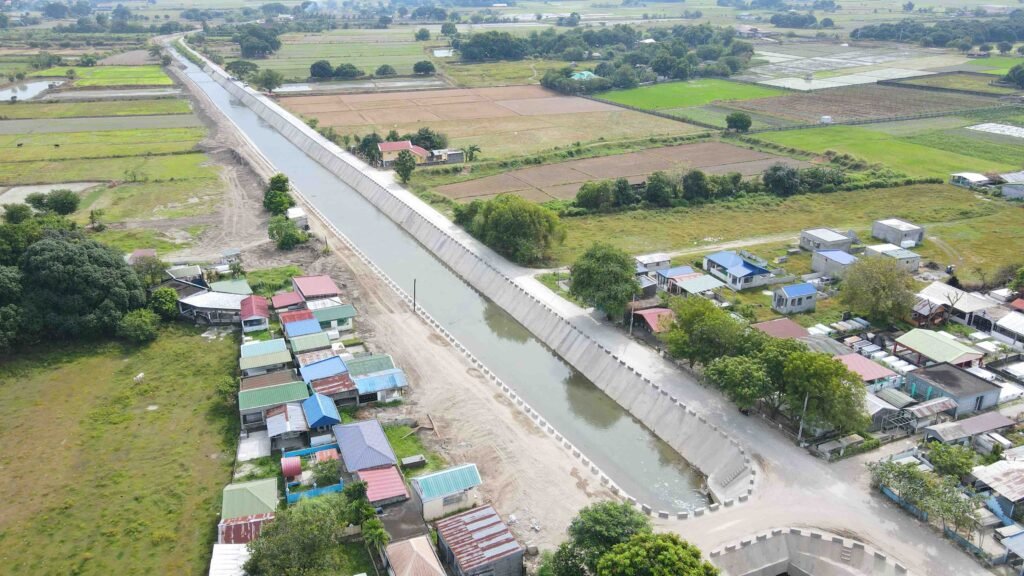Department of Public Works and Highways (DPWH) Region 3 highlighted its significant infrastructure accomplishments during the first year of the administration of President Ferdinand R. Marcos Jr.
Regional Director Roseller Tolentino said DPWH offices in Central Luzon are united in their efforts to contribute to the nation’s recovery from the impact of the COVID-19 pandemic.



“Central Luzon, as a prominent business and tourism destination, undoubtedly faced adverse effects from the pandemic but the department’s active involvement in rebuilding has resulted in the creation of numerous local opportunities for job creation, economic revitalization, and community development thereby contributing to the overall well-being of the region,” Tolentino shared.
As part of the rebuilding initiatives during the first year of the current administration, various projects were completed.
These include the construction of roads, bridges, flood mitigation structures, and other facilities, all of which play a significant role in supporting growth and development.
In Aurora, construction of the 150-lineal meter Kadayacan Bridge in Maria Aurora town resulted in a durable infrastructure that is capable of accommodating all types of vehicles.
The P173.7-million bridge, which connects the adjacent barangays of Bayanihan and Kadayacan, is expected to enhance transportation of goods and people and provide an economic boost for the municipality.
Meanwhile, a total of P189 million was allocated for the construction of river walls along Colo River in Hermosa, Pantingan River in Pilar, and Paysawan River in Bagac, which are all located in Bataan.
P95 million, on the other hand, was earmarked for the construction of flood mitigation structures along Pamatawan River in San Antonio and rehabilitation of Cabaoangan Creek in Subic, which are situated in Zambales.
These structures have the overarching goal of safeguarding rural communities and residential areas from the risks of flooding.
“We are not only focused on protecting lives and improving travel efficiency, but we are also committed to enhancing lives through the construction of various facilities,” Tolentino furthered.
These include the P7.8-million barangay public market at barangay Sto Niño 3rd in San Jose City and the P40.2-million multipurpose facility serving as the annex of the 7th Infantry Division’s main building at Fort Magsaysay in Palayan City, both in Nueva Ecija.
Also, the implementation of slope protection structures along Sapang Palay in the City of San Jose Del Monte in Bulacan, which amount to P94.5 million.
The Regional Director also named other projects aimed at aiding the people and the economy, including the P96.5-million rehabilitation of the Porac-Gumain River Irrigation System in Pampanga.
He also mentioned the P29-million improvement of the Bulihan farm-to-market road in Plaridel and ongoing expansion and improvement of San Miguel District Hospital in Bulacan.
Additionally, efforts to alleviate traffic congestion include the construction of the road dike along the Abacan River in Angeles City with a budget of P175 million, and the implementation of Asphalt Overlay projects, such as the one undertaken to improve the Capas Section of the Tarlac-Zambales Road.
“In strengthening trade and development in Central Luzon and improving inter-regional connectivity, we have consistently improved access conditions through projects like the multi-phase Jose V. Yap Sr. Access Road in San Jose, Tarlac, and the construction of the missing links of the soon-to-be-opened Capas-Botolan Road,” Tolentino disclosed.
DPWH Region 3 is committed to the administration’s infrastructure development strategy, anchored on the Build Better More Program, with focus on establishing an interconnected road network to support rapid, inclusive, and sustained economic growth.
It also expressed readiness to embrace the concept of inclusive and accessible design in response to the President’s recent call for a shift in focus. (PIA 3)










